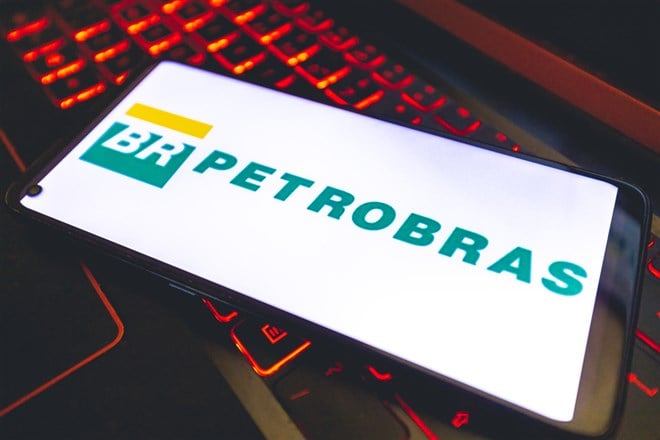
Rock-bottom interest rates, government stimulus globally, hopes of reopening, and record new orders with clogged backlogs - all these factors contributed to the rapid rise in oil and other energy commodities during the 2020-2022 period. These advances benefited some industries more than others, namely the oil and gas industry.
Petroleo Brasileiro S.A. or "Petrobras" (NYSE: PBR) is a Brazilian state-owned firm that has benefited from inflationary trends. Inflation has allowed the firm to sell its products at tremendously high margins, and the reopening of economies, such as China - which accounted for 38-45% of Petrobras' exports in 2022 - has also supported the massive push in operating cash flows and revenues.
Bonus season at Petrobras
Key trends take the spotlight when investors look at a pre-pandemic, pandemic, and post-pandemic era for the Brazilian oil giant. Starting with the major indicator for where operations may be currently or nearly headed, measuring gross profits for Petrobras tells investors an interesting story.
During the period of 2019-2022, the price of oil fluctuated between normal historical levels, and negative prices - in what were certainly crazy times - and then took off to levels not seen since the Great Recession of the late 2000s. In 2019, gross profits were 40.3%, which was considered normal based on the company's past track record and industry levels, while oil traded in the range of $50-$65 per barrel.
This metric shot up to an all-time high of 52.2% in 2022 as oil prices rose to a 52-week high of nearly $120 per barrel of the commodity. These margins are not sustainable in the long term since oil prices will surely revert to normalized historical ranges. Otherwise, it would be a tough time for industries and countries to get things done.
So, how did this 180-degree turn look for operations in the firm that allowed for hefty dividends and bonuses? Operating margins nearly doubled from 26.9% in 2019 to 45.9% in 2022. This unprecedented expansion can be attributed to the multiple 2.1x expansion in gross profits, excluding asset impairment losses that were coming in hot during peak-pandemic drawdowns.
These trickle-down benefits can be expressed through two points of comparison in their net income figures and margins for 2019 vs 2022: $10.3 billion USD and 13.5% vs $36.75 billion USD and 29.5%... Thank you very much.
Likely unsustainable dividend
After delivering a gangbuster year, management paid out $13.86 billion USD in dividends for 2022. Although this figure may be extremely rich - considering it represents almost all of their 4-year average net income - they are only following their dividend payout formula.
This formula stipulates that the firm will pay 60% of the remaining operating cash flows after CAPEX both maintenance and growth. Since management has committed to sticking to this formula, which would allow for a reasonable cash balance after investors are paid and all necessary expansion and maintenance is taken care of, there is a high likelihood that the dividend payout will be reduced in the coming years.
Knowing that the current profitability levels in both dollar and percentage terms are completely out of the ordinary for both the firm and industry, it would be wise not to rely on the current dividend yield for projections or major decisions. Once the operating cash flows and profitability return to the cyclically adjusted average, this payout formula will surprise a lot of market participants when they ultimately announce lower dividends.
Lula's intervention
The newly-elected president, Lula, has announced his intention to change the dividend payout levels in Petrobras to focus these cash flows on investments for a Brazilian-made energy transition. Furthermore, there are rumors that Lula may propose - as he did during his last presidential term in the early 2010s - that Petrobras sell diesel and gasoline (products that domestically represent 76% of their revenue) at lower prices to allow the Brazilian people to afford fuel and aid in containing inflation.
The subsidy proposal would have the Brazilian government pay for the difference in realized gains lost for Petrobras by selling fuel below market prices. Whether this plan, if imposed, is positive or negative for Petrobras depends on various factors, such as the government's proposed price levels and the input costs that Petrobras may face during such periods. As this is highly speculative and variable, investors can rest easy until it is time to crunch the numbers of the proposals, if they ever come at all.
Additionally, Lula has declared that he intends to alter the direction of the wealth created in Petrobras, as the President looks to create more jobs and launch Brazil into a leading energy transition. This proposal is to take half of the computed payouts using management's formula and allocate these resources to Brazilian energy projects and other markets such as petrochemicals and fertilizers controlled by Petrobras.
It is important to note that, according to their 2021 annual report, Petrobras is the largest taxpayer in Brazil. This relationship to government income may allow for an amicable settlement between management and politics for the best of the two interests.
Contrarian purchase?
Believing that oil prices may still have some room to trade at elevated prices, China's pent-up oil demand upon its reopening and further production cuts by OPEC have some analysts predicting that Petrobras could be trading 25% higher than what it is today. A reasonable decline to normalized earnings and cash flow would still place the firm at a normalized P/E ratio of 14-16x, and likely to still pay out a 3-6% dividend if investors assume management will stick to their payout formulas.
Further, this stock seems to be trading near a strong support trendline to the upside, a time-tested support level of $10-$11, and bullish indicator divergences on weekly and daily charts. Caution calls for adding PBR to a watchlist and awaiting further decision/development on the part of the government.












